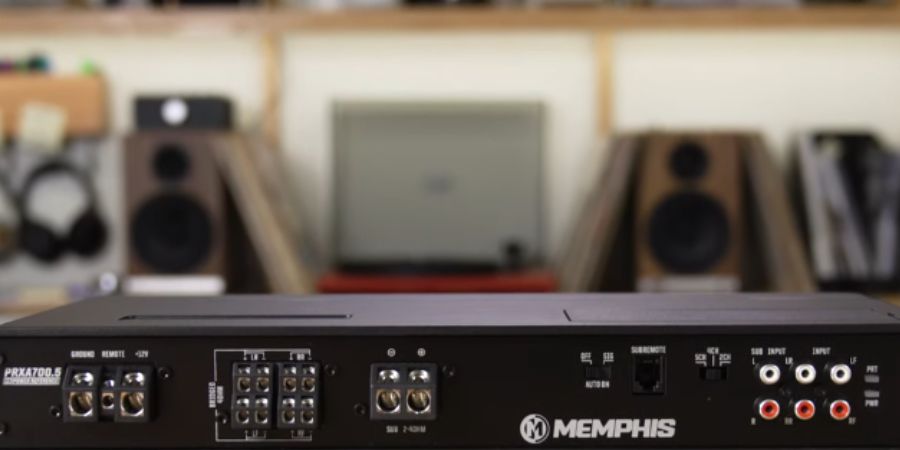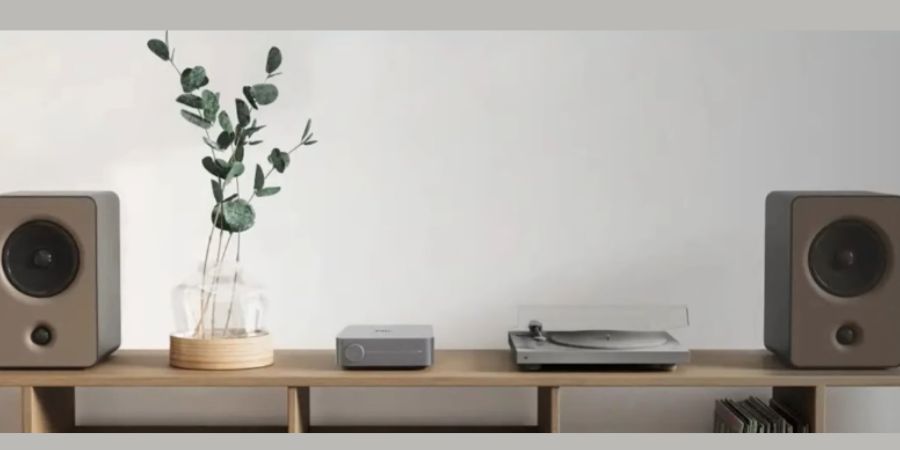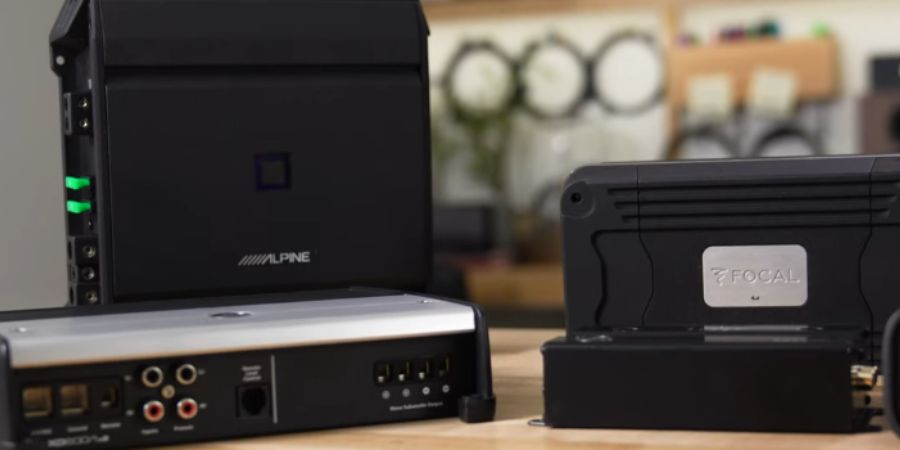Car amplifiers and home amplifiers serve similar functions but in different environments. Both enhance sound quality, yet they are designed for specific uses.
Understanding the differences between car amplifiers and home amplifiers can help you make the right choice for your audio needs. Car amplifiers are built to fit in small spaces and handle the electrical system of a vehicle.
Home amplifiers, on the other hand, are designed to connect to home audio systems and offer more power and features.
Knowing these distinctions is key for anyone looking to upgrade their sound system. In this post, I will explore the main differences, features, and benefits of each type to help you decide which one suits your requirements best.
Basic Differences Car Amplifier Vs Home Amplifier
Car amplifiers and home amplifiers serve similar functions but in different environments. They both amplify sound, but their designs and functionalities differ significantly. Understanding these differences can help you make the right choice for your needs.
Design And Build
Car amplifiers are compact and rugged. They are built to handle the vibrations and heat of a car’s interior. Their small size allows them to fit in tight spaces within the vehicle. Home amplifiers, on the other hand, are larger and often more complex. They are designed to sit in a stable, climate-controlled environment like a living room or home theater.
Car amplifiers have simpler controls and fewer input options. They are made to work with car audio systems. Home amplifiers offer more features and connectivity options. They cater to a wide range of home audio equipment.
Power Supply
Car amplifiers run on a 12-volt DC power supply. This is the same type of power supplied by a car battery. They are efficient to avoid draining the car’s battery quickly. Home amplifiers use a 120-volt AC power supply. This allows them to deliver higher power outputs for larger speakers and more intense audio experiences.
The power supply difference influences their performance and usage. Car amplifiers are optimized for mobile use and quick installations. Home amplifiers benefit from a steady and powerful energy source, ensuring consistent performance.

Sound Quality
When it comes to amplifiers, sound quality is a major factor to consider. But, is there a significant difference between car amplifiers and home amplifiers in this regard? Let’s dive into the details.
Frequency Response
Frequency response is all about how well the amplifier can handle different pitches of sound, from deep bass to high treble. A wide frequency response means the amplifier can play a broader range of sounds clearly.
Home amplifiers often have a wider frequency response compared to car amplifiers. This is because home setups usually involve larger speakers and more varied audio equipment. For example, a home amplifier might handle 20Hz to 20kHz, which covers the full range of human hearing.
On the other hand, car amplifiers are designed for the acoustics of a car. They might not need such a wide frequency range. But they are fine-tuned to handle the road noise and vibrations. This means they can still deliver clear sound, even if the frequency response isn’t as broad.
Distortion Levels
Distortion happens when the amplifier changes the sound signal in a way that it wasn’t supposed to. Lower distortion levels mean clearer sound.
Home amplifiers usually have lower distortion levels. This is because they are designed for a quieter environment. You can hear every detail in your living room, so any distortion would be noticeable.
Car amplifiers might have slightly higher distortion levels. But this doesn’t mean they sound bad. The car’s environment is noisier, with engine sounds and road noise. So a bit of distortion isn’t as noticeable.
To sum it up, both car and home amplifiers can provide great sound quality. It just depends on where you’re using them and what you’re listening for. Whether you want clear, detailed sound at home or powerful, road-ready tunes in your car, there’s an amplifier out there for you.
Power Output
Understanding power output is crucial when comparing car amplifiers and home amplifiers. Power output affects sound quality and performance. Let’s explore some key aspects, like wattage and efficiency, to understand these differences better.
Wattage
Car amplifiers usually have lower wattage compared to home amplifiers. Cars are smaller spaces, so they need less power. Home amplifiers need to fill larger rooms. They have higher wattage for better sound quality. This makes them more powerful for home audio systems.
Efficiency
Efficiency is another important factor. Car amplifiers are designed to be more efficient. Cars have limited power resources. Efficient amplifiers use less battery power. Home amplifiers have access to constant power from outlets. They focus more on sound quality than efficiency.
Installation
Hey friends, today we’re diving into the world of amplifiers. Specifically, we’re going to look at how to install car amplifiers versus home amplifiers. Installation can be a tricky part of setting up your sound system, but don’t worry, we’ll walk you through it step by step. Ready? Let’s get started!
Car Amplifier Setup
Installing a car amplifier can be a bit like putting together a puzzle. It’s fun but requires patience. Here’s a simple guide to help you out:
- Choose a Location: Find a good spot in your car. The trunk is a popular choice.
- Run the Wires: Connect the power wire to your car’s battery. This can be tricky. Be sure to secure it properly.
- Connect the Ground Wire: Attach this to a metal part of your car. It helps reduce noise.
- Connect the Remote Turn-on Wire: This wire tells your amp to turn on when your car stereo does.
- RCA Cables: These cables connect the amp to your stereo. They send the sound signal.
- Speaker Wires: Finally, connect your speakers to the amplifier. Make sure you match the positive and negative terminals.
Remember, safety first! Always disconnect your car battery before starting the installation. It prevents any nasty shocks or accidents.
Home Amplifier Setup
Now, let’s talk about setting up a home amplifier. This is often easier than a car setup. Here’s how you can do it:
- Find a Spot: Place your amplifier in a well-ventilated area. Heat can be an issue.
- Connect to Power: Plug your amp into a power outlet. Easy peasy.
- Connect the Source: Use RCA cables to connect your amp to your audio source, like a TV or a receiver.
- Speaker Connection: Attach your speakers to the amp using speaker wires. Make sure you match the positive and negative terminals.
And there you go! With a few simple steps, you can set up a home amplifier and enjoy great sound.
Installing amplifiers, whether in a car or home, might seem daunting at first. But with some patience and a little guidance, anyone can do it. So, give it a try and enjoy the amazing sound quality!

Portability
When choosing between a car amplifier and a home amplifier, one key factor to consider is portability. How easy is it to move these devices around? Let’s dive into this topic by examining their size, weight, and ease of transport.
Size And Weight
One of the first things you’ll notice is the size and weight differences between car amplifiers and home amplifiers.
- Car Amplifiers: These are designed to fit in vehicles, so they’re usually small and lightweight. They need to be compact to fit under seats or in the trunk. Think of them as the size of a small laptop or a thick book.
- Home Amplifiers: These are meant for stationary setups. They can be quite large and heavy, similar to the size of a desktop computer or a large dictionary. They aren’t designed to be moved often.
So, if you’re looking for something that won’t take up much space and is easy to handle, a car amplifier might be a better choice.
Ease Of Transport
Now, let’s talk about how easy it is to transport these amplifiers.
- Car Amplifiers: Because they are small and light, they are very easy to move around. You can carry them in a backpack or a small bag. It’s like taking a tablet with you.
- Home Amplifiers: These are heavier and bulkier. Moving them from one place to another can be a workout. It’s like moving a small piece of furniture.
In my experience, I once tried to move my home amplifier to a friend’s house for a party. It was a hassle! I needed help, and it took up a lot of trunk space. On the other hand, my car amplifier was a breeze to transport. I just put it in my bag and off I went.
The bottom line? If you need something portable, go for a car amplifier. It’s much easier to carry around and won’t break your back.
Cost Comparison
Hey there! Are you curious about the cost differences between car amplifiers and home amplifiers? Well, you’re in the right place. Let’s break down the costs and see what you get for your money. We’ll look at the price ranges and how much value you get for your investment. Ready? Let’s dive in!
Price Range
First, let’s talk about the price ranges for these amplifiers. Car amplifiers and home amplifiers can vary widely in price. Here’s a quick look at what you can expect:
Type | Price Range |
Car Amplifiers | $50 – $500 |
Home Amplifiers | $100 – $1000 |
As you can see, car amplifiers generally start at a lower price. You can find basic models for as low as $50. Home amplifiers, on the other hand, start at around $100 and can go up to $1000 or more.
Value For Money
Now, let’s see what you get for your money. Are these amplifiers worth the cost? Here’s the scoop:
- Car Amplifiers: If you’re looking to upgrade your car’s sound system, a car amplifier can make a big difference. Even the cheaper models can boost your audio quality. But remember, you often get what you pay for. Higher-end models offer better sound clarity and more power.
- Home Amplifiers: For home audio, spending a bit more can be worth it. A good home amplifier can enhance your music or movie experience. More expensive models offer better features like surround sound and higher power output.
So, which one is the best value for money? It really depends on your needs. If you’re a casual listener, a mid-range car amplifier might be perfect. But if you’re a home audio enthusiast, investing in a high-quality home amplifier can be a great choice.
Personal anecdote time! I recently upgraded my car’s sound system with a mid-range car amplifier. The difference was night and day. Crisp sound, deep bass. Worth every penny. On the flip side, my friend invested in a high-end home amplifier. Movie nights at his place are now like being in a theater. Both choices brought a lot of joy.
In conclusion, both car and home amplifiers offer value. Your choice depends on your budget and what you want from your audio experience. Happy shopping!
Durability
Durability is a critical factor when comparing car amplifiers and home amplifiers. Both types need to withstand different conditions. Their build quality and longevity play a key role in their durability. Let’s explore these aspects.
Build Quality
Car amplifiers are designed to endure harsh environments. They face constant vibrations, temperature fluctuations, and humidity. Manufacturers use sturdy materials and robust designs. This ensures the amplifier can handle these challenges without failing.
Home amplifiers, on the other hand, have a different focus. They are built for stable indoor environments. The materials used may not be as rugged. The emphasis is more on performance and aesthetics. They don’t need to withstand the same level of physical stress.
Longevity
Car amplifiers need to be long-lasting despite tough conditions. They often include features like heat sinks and cooling fans. These help manage heat and prolong the amplifier’s life. Regular maintenance can further extend their longevity.
Home amplifiers generally have a longer lifespan in stable conditions. They don’t face the same environmental stress as car amplifiers. With proper care and usage, they can last many years. Regular cleaning and avoiding overheating are key to their longevity.

Compatibility
Compatibility is a crucial factor to consider when choosing between a car amplifier and a home amplifier. Each has specific requirements that make it suitable for its environment. Understanding these differences will help you make an informed decision.
Car Audio Systems
Car audio systems operate on a 12-volt electrical system. This low voltage is essential for car amplifiers. They are designed to function efficiently with a car’s battery. Car amplifiers are also built to withstand vibrations and temperature changes. The design focuses on compact size to fit in the limited space of a vehicle.
Home Audio Systems
Home audio systems use a 110 or 220-volt electrical system. This high voltage allows home amplifiers to generate more power. Home amplifiers are not designed to handle vibrations. They focus on delivering high-fidelity sound in a stable environment. Their size is often larger, accommodating more components for better sound quality.
User Preferences
When it comes to choosing between a car amplifier and a home amplifier, user preferences play a significant role. People have different tastes and needs, which influence their decisions. Let’s break down some key aspects that users consider when making a choice between these two types of amplifiers.
Aesthetic Appeal
Looks matter. A lot. Especially when it comes to electronics. Car amplifiers are designed to fit into the sleek, compact spaces of a vehicle. They often have a modern, edgy look with LED lights and metallic finishes. Think of them as the sports cars of the amplifier world. Cool, right?
Home amplifiers, on the other hand, are like the classy sedans. They usually have a more elegant and professional appearance. These devices often come in larger sizes with wooden or matte finishes that blend seamlessly with home decor. They are meant to impress, not just with sound, but also with their presence in your living room.
User Experience
How you interact with your amplifier can make or break your experience. Car amplifiers are often controlled via the car’s audio system or through a smartphone app. This makes them easy to adjust while you’re on the go. Imagine changing your car’s audio settings without even touching the amplifier. Convenient, right?
Home amplifiers offer a different kind of experience. They typically come with remote controls and multiple input options. This means you can connect various devices like your TV, gaming console, or turntable. The setup might take a bit more time, but the payoff is a versatile, high-quality sound system that transforms your living room into a mini-theater.
| Feature | Car Amplifier | Home Amplifier |
|---|---|---|
| Aesthetic Appeal | Modern, sleek, compact | Elegant, professional, large |
| User Experience | Controlled via car audio system or app | Multiple inputs, remote control |
In the end, the choice between a car amplifier and a home amplifier boils down to what you value more. Do you want something cool and easy to use on the road? Or do you prefer a sophisticated device that enhances your home entertainment setup? Think about your lifestyle and what suits you best.
Technological Features
Technological features play a crucial role in choosing between a car amplifier and a home amplifier. Both amplifiers have specific features tailored to their use cases. Understanding these features can help you make an informed decision.
Connectivity Options
Car amplifiers usually have limited connectivity options. They often feature RCA inputs and speaker level inputs. These inputs are enough for car audio systems. Home amplifiers offer more diverse connectivity options. Common options include RCA, optical, coaxial, and even USB inputs. This variety allows for connecting multiple devices.
Advanced Features
Car amplifiers often come with bass boost and subsonic filters. These features enhance the low-frequency performance. They are essential for a dynamic car audio experience. Home amplifiers boast different advanced features. Room correction technology is a standout feature. It adjusts sound settings based on room acoustics. Some home amplifiers also include streaming capabilities. This allows for direct music streaming from your smartphone or computer.
Energy Efficiency
Energy efficiency is a crucial factor when choosing between a car amplifier and a home amplifier. It affects both your electricity bill and the environment. Understanding how each amplifier consumes power and its environmental impact can help you make an informed decision.
Power Consumption
Car amplifiers are designed to work with a vehicle’s battery. They usually operate at 12 volts. This low voltage requirement means car amplifiers consume less power. They are built to be efficient so they don’t drain the car battery quickly. In contrast, home amplifiers operate at higher voltages, typically 110 or 220 volts. Home amplifiers often consume more power. They are connected to the main electrical grid, which provides a constant power supply.
Environmental Impact
Car amplifiers have a smaller environmental impact due to their lower power consumption. This reduced energy usage means less strain on the car battery and lower fuel consumption. Home amplifiers, with their higher power needs, contribute more to energy consumption. This can lead to a higher carbon footprint. Choosing an energy-efficient home amplifier can help mitigate this impact. Look for models with energy-saving features to reduce your environmental footprint.
Brand Options
When it comes to choosing between a car amplifier and a home amplifier, the brand options can make a big difference in your listening experience. Understanding which brands are popular and why they are trusted can help you make an informed decision. Let’s dive into some of the top brands for both car and home amplifiers.
Popular Car Amplifier Brands
For car amplifiers, there are a few brands that stand out due to their quality and performance. These brands have been in the market for a long time and are known for their reliability. Here are some of the most popular car amplifier brands:
- Alpine: Alpine is famous for its high-quality sound and sleek designs. They offer a range of amplifiers that cater to different needs and budgets.
- Pioneer: Pioneer is another trusted name in car audio. Their amplifiers are known for their power and clarity, making them a favorite among car enthusiasts.
- JL Audio: JL Audio amplifiers are known for their excellent build quality and performance. They are often praised for their ability to deliver clean and powerful sound.
- Kenwood: Kenwood offers a wide range of amplifiers that are both affordable and high-performing. They are a great option for those looking for value without compromising on quality.
Popular Home Amplifier Brands
When it comes to home amplifiers, the choices are just as varied. Some brands are known for their innovation and superior sound quality, making them go-to options for home audio setups. Here are some of the top brands for home amplifiers:
- Denon: Denon is renowned for its high-fidelity audio equipment. Their amplifiers are designed to deliver rich and immersive sound, perfect for home theater systems.
- Marantz: Marantz amplifiers are highly regarded for their precision and musicality. They are a favorite among audiophiles who demand the best sound quality.
- Yamaha: Yamaha is a versatile brand offering amplifiers that cater to various needs, from simple stereo setups to complex home theater systems. Their products are known for their reliability and performance.
- Onkyo: Onkyo offers a range of amplifiers that deliver powerful and clear sound. They are a popular choice for those looking to enhance their home audio experience.
Choosing the right amplifier, whether for your car or home, involves considering the brand reputation and what each brand is known for. By understanding the strengths of these popular brands, you can make a choice that suits your specific audio needs.

My Final Verdict
Alright friends, we’ve talked a lot about car amplifiers and home amplifiers. So, which one should you choose? Let’s break it down and find out.
Best Uses For Each Type
First off, think about where you plan to use the amplifier. If you need sound on the go, like in your car, a car amplifier is the way to go. But if you want to enhance the audio experience in your living room, a home amplifier is your best bet. Here’s a quick look at the best uses for each type:
- Car Amplifiers: Perfect for cars, trucks, and boats. They boost your sound system, making your music loud and clear while driving.
- Home Amplifiers: Ideal for home theaters and stereo systems. They provide rich, high-quality sound, enhancing your movies and music at home.
Making The Right Choice
Choosing the right amplifier depends on your needs. If you’re always on the move, a car amplifier is what you need. It’s designed to handle the vibrations and space constraints of a vehicle. On the other hand, if you’re setting up a sound system at home, go for a home amplifier. It delivers better sound quality and can support more devices.
Here’s a simple way to decide:
- Think about your use case: Do you need it for your car or your home?
- Consider the environment: Car amplifiers are built for the road, while home amplifiers are built for stationary setups.
- Check the power needs: Car amplifiers run on your car battery, whereas home amplifiers need a power outlet.
Remember, it’s not about which one is better. It’s about what fits your needs. I remember when I set up my first sound system. I chose a home amplifier because I wanted amazing sound quality for my movie nights. But when I got my new car, I went with a car amplifier to enjoy my favorite tunes on the road.
So, there you have it. The final verdict? Choose the amplifier that suits your lifestyle. Whether it’s for your car or your home, there’s an amplifier out there that’s perfect for you.
Frequently Asked Questions
Can A Car Amplifier Be Used At Home?
Yes, a car amplifier can be used at home with the right power supply. Ensure it matches the amplifier’s voltage and current requirements.
Does A Car Amplifier Improve Sound Quality?
Yes, a car amplifier improves sound quality. It provides more power to speakers, resulting in clearer, louder, and more dynamic audio.
What Happens If An Amp Is Too Powerful For Speakers?
An overly powerful amp can damage speakers by overdriving them, causing distortion or even blowing them out. Use compatible power ratings.
How Much Difference Does A Car Amplifier Make?
A car amplifier significantly enhances audio quality. It delivers clearer, louder, and more dynamic sound. Upgrading your amplifier improves your overall listening experience.






